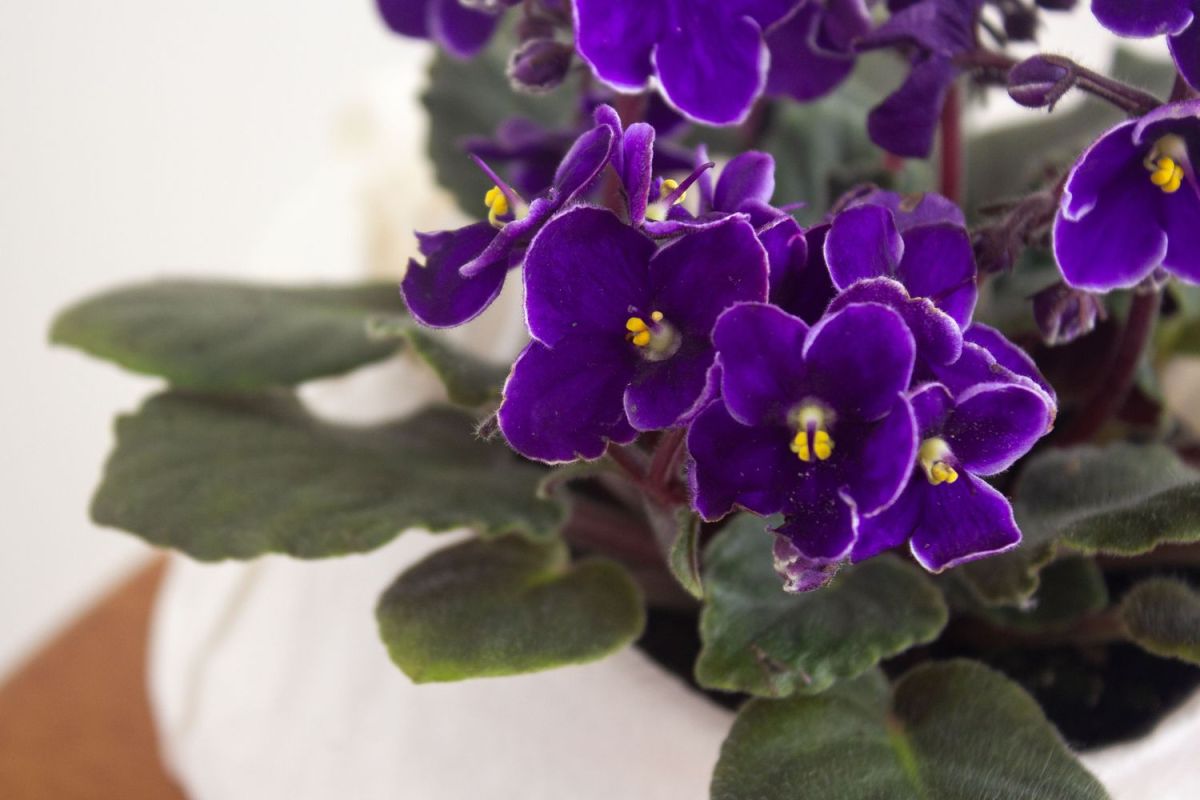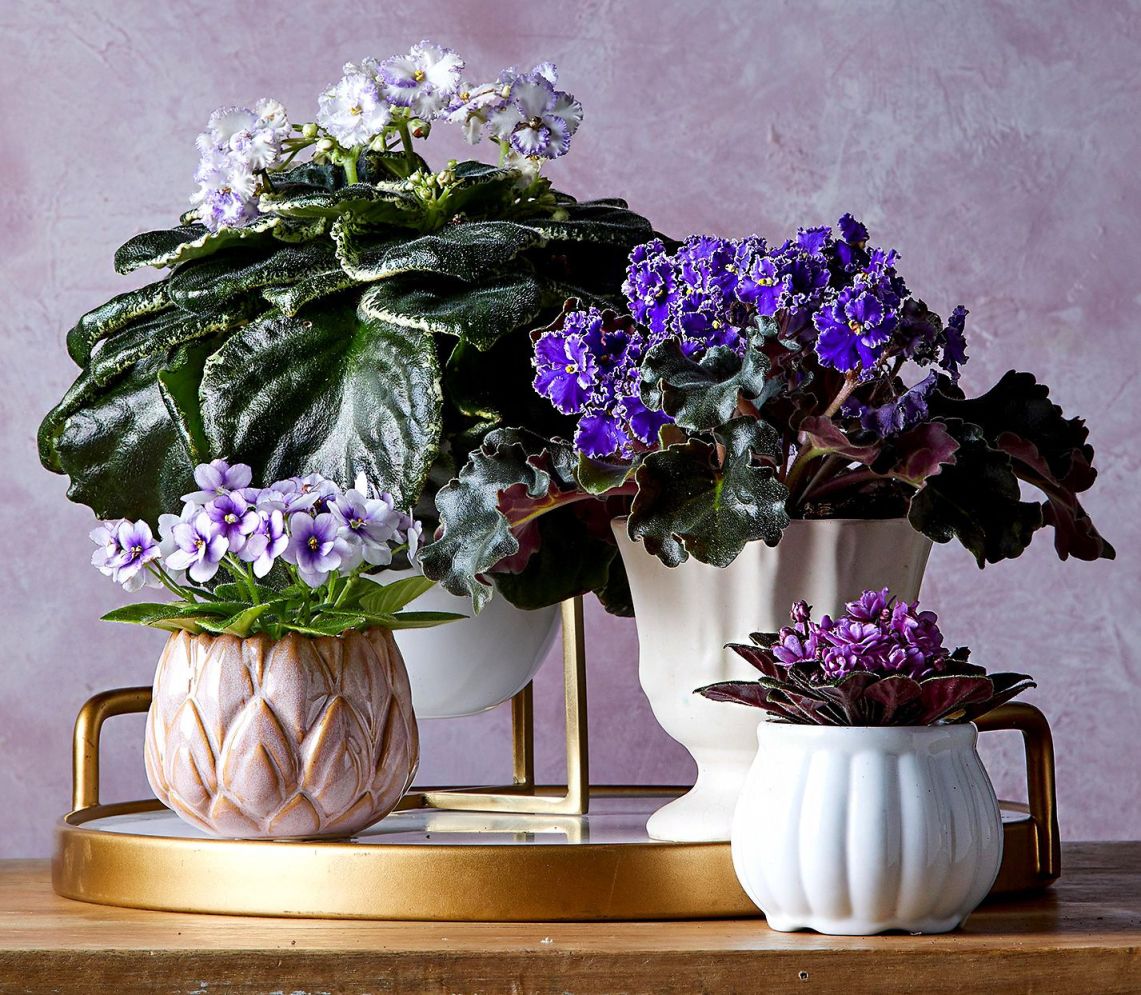The Beauty Of Purple Blooms: A Guide To House Plants With Stunning Purple Flowers

House Plants with Purple Flowers: Adding a Burst of Color to Your Indoor Space
Introduction: What do we mean by house plants with purple flowers?
House plants with purple flowers are a wonderful addition to any indoor space, bringing a burst of vibrant color and natural beauty to your home. These plants are known for their stunning purple blooms, which can range from deep, rich shades to lighter and more delicate hues. Whether you prefer large, showy flowers or smaller clusters of blooms, there is a wide variety of house plants with purple flowers to choose from.
How to choose the perfect house plant with purple flowers?
When it comes to selecting the perfect house plant with purple flowers, there are several factors to consider. Firstly, think about the size of the plant and how it will fit into your space. Some purple-flowered house plants, such as the African violet or the orchid, are compact and ideal for smaller areas, while others, like the purple passion plant or the wandering jew, can sprawl and add a touch of drama to larger spaces.

Secondly, consider the level of care required for the plant. Some house plants with purple flowers, such as the peace lily or the African violet, are relatively easy to care for and can thrive in a variety of indoor conditions. Others, like the orchid or the hydrangea, may require more specific care and attention, but their stunning blooms make the extra effort worthwhile.
Lastly, think about the overall aesthetic you want to achieve. If you prefer a more modern and minimalist look, plants like the purple waffle plant or the purple shamrock can add a subtle pop of color without overwhelming your space. On the other hand, if you want to make a bold statement, opt for larger and more flamboyant purple-flowered plants such as the bougainvillea or the amethyst flower.
What is known about the care and maintenance of house plants with purple flowers?

Caring for house plants with purple flowers is not much different from caring for other house plants. However, it’s important to note that each plant has its own specific needs. Here are some general care tips to keep in mind:
1. Light: Most house plants with purple flowers thrive in bright, indirect light. Place them near a window where they can receive plenty of natural light without being exposed to direct sunlight, which can scorch their leaves.
2. Watering: The watering needs of purple-flowered house plants vary. While some plants, like the African violet, prefer evenly moist soil, others, like the orchid, need to dry out slightly between waterings. It’s important to research the specific watering requirements of each plant and adjust your watering routine accordingly.
3. Temperature and Humidity: Most house plants with purple flowers prefer temperatures between 60-75°F (15-24°C) during the day and slightly cooler temperatures at night. Additionally, these plants generally thrive in environments with moderate to high humidity, so consider using a humidifier or placing a tray of water near your plants.
4. Fertilizer: To promote healthy growth and abundant blooms, it’s important to fertilize your purple-flowered house plants regularly. Use a balanced, water-soluble fertilizer that is specifically formulated for indoor plants, following the instructions on the packaging.
5. Pruning and Maintenance: Regular pruning and maintenance are essential for keeping your house plants with purple flowers looking their best. Remove any dead or yellowing leaves, trim overgrown branches, and pinch back stems to encourage bushier growth.
Best purple-flowered house plant varieties
Now that we have covered the basics of caring for house plants with purple flowers, let’s explore some popular and beautiful varieties that you can consider for your indoor garden:
1. African Violet (Saintpaulia)
The African violet is a classic favorite among indoor gardeners. It features clusters of delicate, purple flowers that bloom almost year-round, adding a touch of elegance to any space. This compact plant is relatively low-maintenance and thrives in bright, indirect light.
2. Orchid (Phalaenopsis)
Renowned for their exotic beauty, orchids come in various colors, including stunning purple varieties. These plants require a bit more care and attention, but their long-lasting blooms are worth the effort. Place them in a location with bright, indirect light and provide proper humidity and air circulation.
3. Peace Lily (Spathiphyllum)
While predominantly known for its white flowers, the peace lily also offers purple-flowered varieties. This plant is an excellent choice for beginners as it is easy to care for and can tolerate lower light conditions. It also acts as an air purifier, improving the air quality in your home.
4. Hydrangea (Hydrangea spp.)
The hydrangea is a popular outdoor flowering plant, but certain varieties can be grown successfully indoors. With their large and showy flower heads, purple hydrangeas create a stunning focal point in any room. Provide them with bright, indirect light and consistent watering to enjoy their beautiful blooms.
5. Purple Heart (Setcreasea pallida)
The purple heart plant, also known as wandering jew or purple queen, is a trailing vine that adds a touch of whimsy to any space. Its purple foliage and small pink flowers create an eye-catching display when placed in hanging baskets or allowed to cascade over shelves or furniture.
Conclusion
Adding house plants with purple flowers to your indoor space is an excellent way to infuse color and natural beauty into your home. Whether you prefer the elegance of African violets, the exotic allure of orchids, or the boldness of bougainvillea, there is a purple-flowered house plant variety to suit every style and preference.
Remember that each plant has its own specific care requirements, so be sure to research and provide the necessary conditions for optimal growth. With proper care and attention, your house plants with purple flowers will reward you with their stunning blooms, bringing joy and a touch of nature to your indoor oasis.
FAQs (Frequently Asked Questions)
1. Are house plants with purple flowers suitable for low light conditions?
While some purple-flowered house plants can tolerate lower light conditions, most of them prefer bright, indirect light. If your space has limited natural light, consider using artificial grow lights to provide the necessary light energy for their growth.
2. Can I grow house plants with purple flowers in an office environment?
Yes, you can certainly grow house plants with purple flowers in an office environment. Opt for varieties that can thrive in lower light conditions and make sure to provide them with proper care, including regular watering and occasional fertilization.
3. How often should I fertilize my purple-flowered house plants?
The frequency of fertilization depends on the specific plant variety and the type of fertilizer you are using. In general, it is recommended to fertilize your purple-flowered house plants every 4-6 weeks during the growing season (spring and summer) and reduce or stop fertilization during the dormant period (fall and winter).
4. Can I propagate my house plants with purple flowers?
Yes, many house plants with purple flowers can be propagated through various methods such as stem cuttings, division, or leaf cuttings. Research the specific propagation techniques for your plant variety and follow the recommended steps for successful propagation.
5. What are some common pests and diseases that affect house plants with purple flowers?
House plants with purple flowers can be susceptible to pests such as aphids, mealybugs, and spider mites. Regularly inspect your plants for any signs of infestation and take appropriate measures, such as using natural insecticidal soaps or introducing beneficial insects, to control and prevent pest problems. Additionally, overwatering or improper drainage can lead to root rot or fungal diseases, so ensure your plants are not sitting in water and provide proper ventilation to prevent moisture-related issues.

I am a beginner writer who continues to learn and consistently creates informative articles to express the ideas that I master.